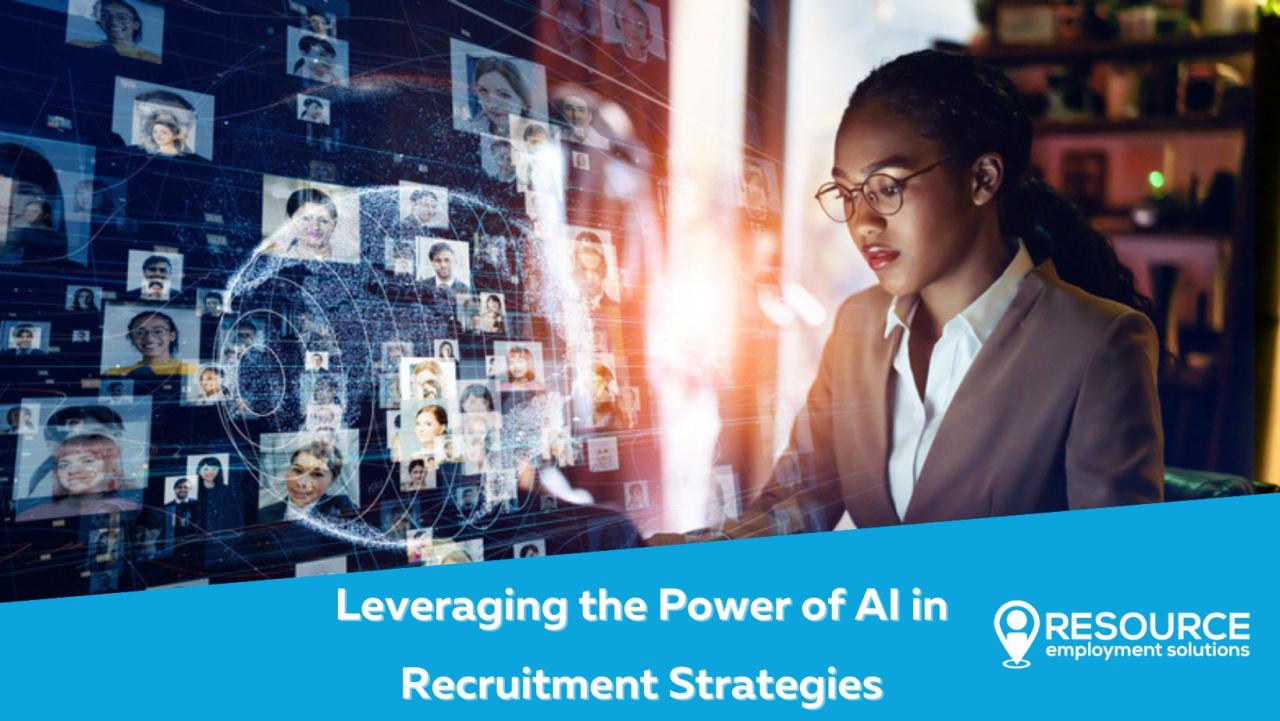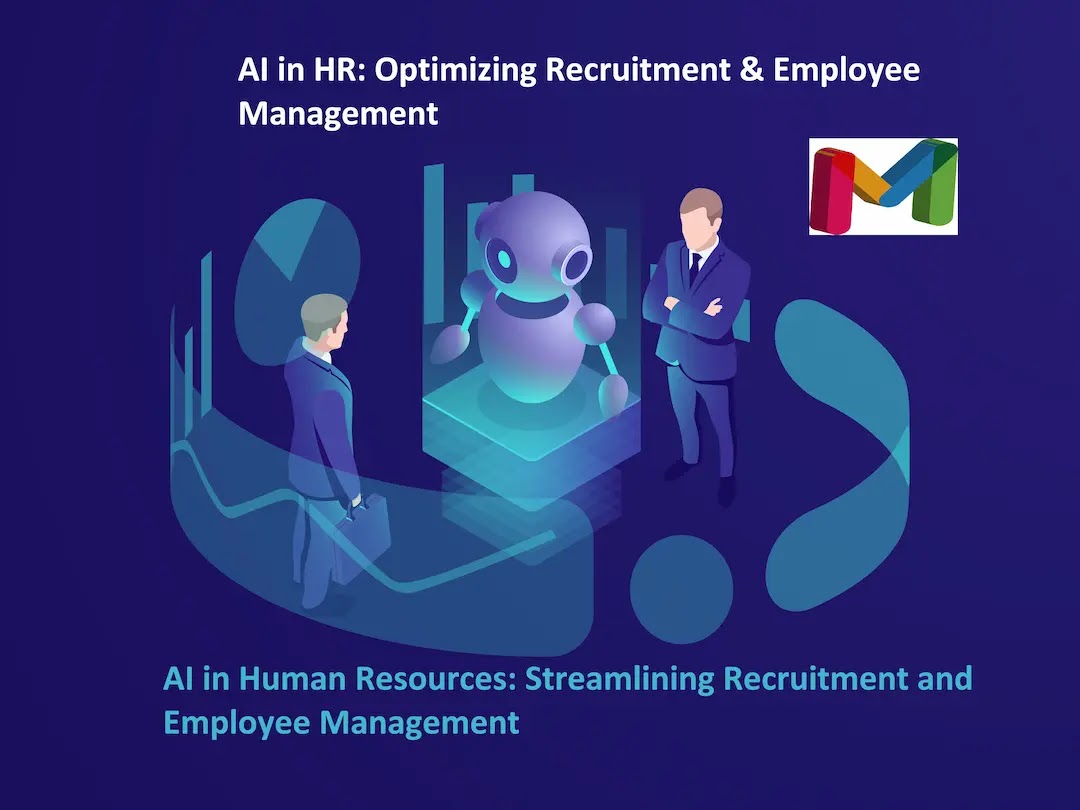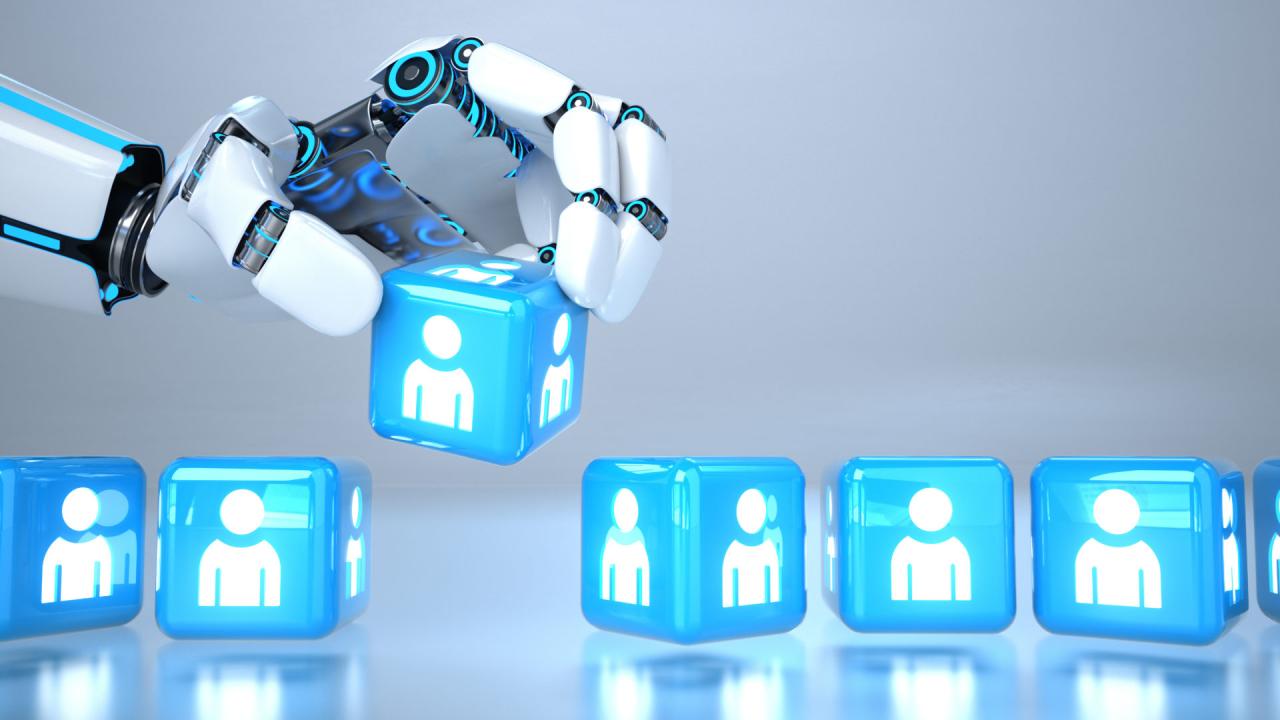Implementing AI for better remote hiring and recruitment is revolutionizing how companies find, assess, and onboard talent. This transformative technology streamlines the entire recruitment process, from initial candidate sourcing to final onboarding, offering significant improvements in efficiency, cost-effectiveness, and candidate experience. However, ethical considerations and potential biases inherent in AI algorithms require careful attention and proactive mitigation strategies.
This guide delves into the practical applications of AI across all stages of remote recruitment, providing actionable insights and best practices. We’ll explore AI-powered tools for sourcing, screening, assessing, and interviewing candidates, alongside strategies for mitigating bias and ensuring data security. The goal is to equip you with the knowledge and resources needed to leverage AI effectively while maintaining ethical and legal compliance.
AI-Powered Candidate Sourcing

AI is revolutionizing recruitment, particularly in sourcing candidates. Its ability to analyze vast datasets and identify patterns allows recruiters to reach a wider pool of talent, including passive candidates who aren’t actively seeking new opportunities. This leads to a more diverse and qualified applicant pool, ultimately improving the quality of hire.
AI Methods for Identifying Passive Candidates
AI leverages various online platforms to identify passive candidates. This involves sophisticated algorithms that analyze publicly available data such as profiles on LinkedIn, GitHub, Stack Overflow, and even personal websites and blogs. These algorithms identify individuals with the desired skills and experience based on s, project involvement, and other relevant criteria. Furthermore, AI can predict the likelihood of a passive candidate being open to a new opportunity based on factors like their recent activity, job tenure, and online engagement.
For example, an algorithm might flag a software engineer with extensive open-source contributions and a recent lull in activity as a potential candidate, suggesting they might be receptive to a new role.
AI-Enhanced Resume and Application Screening
AI significantly improves the efficiency of screening resumes and applications. Traditional methods are often time-consuming and prone to bias. AI algorithms can quickly scan large volumes of applications, extracting key information and ranking candidates based on pre-defined criteria. This includes identifying s, matching skills to job descriptions, and even assessing the tone and style of writing. This allows recruiters to focus their time on the most promising candidates, accelerating the hiring process.
For instance, an AI system could prioritize candidates with specific programming languages mentioned in the job description, filtering out those lacking the essential qualifications.
AI-Driven Recruitment Chatbots for Initial Interaction
AI-powered recruitment chatbots offer a streamlined way to engage with candidates initially. These chatbots can answer frequently asked questions, schedule interviews, and collect basic information. While offering 24/7 availability and immediate responses, improving candidate experience, there are drawbacks. Chatbots may struggle with complex or nuanced questions, potentially frustrating candidates if they can’t provide satisfactory answers. Furthermore, the lack of human interaction can feel impersonal, especially for candidates who prefer a more personal touch.
The success of a recruitment chatbot relies heavily on its programming and ability to handle a wide range of queries effectively. A well-designed chatbot can significantly improve candidate engagement and reduce the administrative burden on recruiters, while a poorly designed one could damage the employer’s brand.
Comparison of AI-Powered Sourcing Tools
Several AI-powered sourcing tools are available, each with unique functionalities and capabilities. Choosing the right tool depends on the specific needs and budget of the organization.
| Tool | Features | Pricing | Integration Capabilities |
|---|---|---|---|
| LinkedIn Recruiter | Advanced search filters, candidate profiles, InMail credits, analytics | Subscription-based, tiered pricing | Integrates with LinkedIn Learning, Sales Navigator |
| Beamery | Talent pool management, CRM, candidate engagement, AI-powered search | Enterprise-level pricing, contact sales for details | Integrates with various ATS and HR systems |
| Hiretual | AI-powered search, social media sourcing, candidate profiles, CRM | Subscription-based, tiered pricing | Integrates with popular ATS and HR systems |
| SourceWhale | AI-powered search, email outreach, candidate engagement, analytics | Subscription-based, tiered pricing | Integrates with various email marketing platforms and ATS |
Bias Mitigation in AI-Driven Recruitment: Implementing AI For Better Remote Hiring And Recruitment

AI-powered recruitment tools offer significant advantages in efficiency and scale, but their reliance on data introduces the risk of perpetuating and even amplifying existing societal biases. Failing to address these biases can lead to unfair and discriminatory hiring practices, undermining the very principles of equality and meritocracy. This section explores the potential sources of bias, strategies for mitigation, and the ethical considerations crucial for responsible AI implementation in recruitment.
Potential Sources of Bias in AI Recruitment Algorithms
AI algorithms learn from the data they are trained on. If this data reflects historical biases – for instance, underrepresentation of women or minorities in specific roles – the algorithm will likely perpetuate these biases in its predictions. This can manifest in various ways, such as biased screening that unfairly filters out qualified candidates from certain demographic groups, or in algorithms that prioritize candidates from specific educational institutions or with particular backgrounds, thereby excluding equally or more qualified individuals.
Furthermore, biases can be introduced through the design of the algorithm itself, reflecting unconscious biases of the developers. For example, an algorithm designed to prioritize candidates with specific personality traits might inadvertently favor individuals from certain cultural backgrounds who exhibit those traits more frequently.
Strategies for Mitigating Bias in AI-Driven Recruitment
Several strategies can be implemented to mitigate bias in AI-driven recruitment. Firstly, rigorous data auditing is crucial. Organizations must carefully examine the datasets used to train their algorithms, identifying and addressing any imbalances or biases present. This might involve techniques like data augmentation to increase the representation of underrepresented groups or re-weighting samples to balance the dataset. Secondly, employing diverse and inclusive teams to develop and implement AI recruitment tools is essential.
A diverse team is more likely to identify and address potential biases in the algorithm’s design and implementation. Thirdly, implementing fairness-aware algorithms can help directly address bias. These algorithms are designed to explicitly account for protected characteristics and minimize discriminatory outcomes. Finally, human oversight remains critical. Human reviewers should always have the final say in the hiring process, reviewing the AI’s recommendations and ensuring that the process remains fair and equitable.
Regular audits of the AI’s performance and its impact on diversity metrics should be conducted to monitor effectiveness and identify areas for improvement.
Ethical Considerations and Transparency in AI Recruitment
The ethical use of AI in recruitment necessitates transparency and accountability. Organizations must be upfront about their use of AI in the hiring process, explaining how the technology is used and the steps taken to mitigate bias. This builds trust with candidates and fosters a sense of fairness. Furthermore, clear guidelines and protocols should be established to ensure that the use of AI aligns with ethical principles and legal regulations.
This includes mechanisms for candidates to challenge or appeal decisions made by the AI system. Organizations should also prioritize explainability, ensuring that the AI’s decision-making process is understandable and justifiable. This allows for scrutiny and helps build confidence in the system’s fairness. Ignoring these ethical considerations can lead to legal challenges, reputational damage, and a loss of trust among both candidates and employees.
Checklist for Implementing AI-Driven Recruitment Tools to Minimize Bias
Before implementing AI-driven recruitment tools, organizations should carefully review the following checklist:
- Data Audit: Conduct a thorough audit of the data used to train the AI algorithm, identifying and addressing any potential biases.
- Algorithm Design: Ensure that the algorithm’s design is fair and equitable, minimizing the potential for discrimination.
- Diverse Development Team: Involve a diverse team in the development and implementation of the AI recruitment tool.
- Fairness-Aware Algorithms: Consider using fairness-aware algorithms that explicitly account for protected characteristics.
- Human Oversight: Maintain human oversight in the hiring process, ensuring that the AI’s recommendations are reviewed and that the final decision is made by a human.
- Transparency and Explainability: Be transparent about the use of AI in the hiring process and ensure that the AI’s decision-making process is understandable and justifiable.
- Regular Audits: Conduct regular audits of the AI’s performance and its impact on diversity metrics.
- Appeal Process: Establish a clear process for candidates to appeal decisions made by the AI system.
- Compliance with Regulations: Ensure that the use of AI in recruitment complies with all relevant legal and ethical regulations.
AI-Enhanced Candidate Assessment

AI is revolutionizing candidate assessment, moving beyond traditional methods to offer more objective, efficient, and insightful evaluations of skills and competencies. This shift allows recruiters to make data-driven decisions, improving the quality of hire and enhancing the candidate experience. The integration of AI into the assessment process is not merely about automation; it’s about leveraging advanced analytics to gain a deeper understanding of candidate potential.AI-powered assessment tools are transforming how organizations evaluate candidates.
These tools utilize various techniques, including natural language processing (NLP), machine learning (ML), and advanced statistical modeling, to analyze candidate responses and predict future performance. This allows for a more comprehensive and nuanced understanding of a candidate’s capabilities beyond what traditional methods can provide.
Examples of AI-Powered Assessment Tools
Several AI-powered assessment tools are available, each offering unique capabilities. For example, platforms like Pymetrics utilize gamified assessments to measure cognitive abilities, personality traits, and emotional intelligence. These games subtly assess skills relevant to specific job roles, providing a more engaging and less biased evaluation than traditional methods. Other platforms, such as HackerRank, focus on skills testing through coding challenges and technical assessments, allowing recruiters to evaluate practical skills in a standardized and efficient manner.
Finally, platforms leveraging AI-driven video interviewing analyze candidates’ verbal and non-verbal communication, providing insights into their communication style and interpersonal skills. These tools offer diverse methods of evaluating candidate capabilities beyond the constraints of traditional resumes and cover letters.
Personalizing the Candidate Experience Through AI
AI can significantly personalize the candidate experience throughout the assessment process. By adapting assessments based on candidate profiles and job requirements, AI ensures that each candidate receives a relevant and engaging experience. For instance, AI can tailor the difficulty and content of assessments to match a candidate’s skill level, preventing both overly challenging and overly simplistic evaluations. Furthermore, AI can provide candidates with immediate feedback on their performance, allowing them to understand their strengths and weaknesses and improve their future applications.
This personalized feedback fosters a more positive and informative candidate experience, enhancing the overall perception of the hiring process.
Best Practices for Integrating AI-Based Assessments
Successfully integrating AI-based assessments into a remote hiring workflow requires careful planning and execution. Firstly, organizations must ensure that the chosen AI tools align with their specific hiring needs and legal requirements. This involves a thorough assessment of the tool’s capabilities and a careful review of its potential biases. Secondly, transparency is crucial. Candidates should be informed about the use of AI in the assessment process and how their data will be used.
This fosters trust and ensures a fair and ethical evaluation. Thirdly, organizations should prioritize data security and privacy, adhering to all relevant regulations and best practices. Finally, it is essential to monitor the performance of AI-based assessments regularly and make necessary adjustments to ensure accuracy and fairness.
Comparison of Traditional and AI-Driven Assessment Methods
| Assessment Method | Strengths | Weaknesses | Cost |
|---|---|---|---|
| Traditional (e.g., resume screening, interviews) | Familiar, relatively inexpensive, allows for subjective judgment | Prone to bias, time-consuming, limited insight into skills | Low to Moderate |
| AI-Driven (e.g., gamified assessments, skills tests) | Objective, efficient, provides deeper insights into skills, reduces bias | Requires technical expertise, potential for bias if not carefully implemented, can be expensive | Moderate to High |
Improving Remote Interview Processes with AI
Remote hiring presents unique challenges, particularly in conducting effective interviews. AI offers a powerful solution to streamline and enhance this crucial stage of the recruitment process, leading to improved candidate experience and more efficient hiring decisions. By automating administrative tasks, providing objective analysis of candidate responses, and offering a more consistent interview experience, AI helps organizations overcome the limitations of geographically dispersed teams and large applicant pools.
AI-Powered Scheduling and Management of Remote Interviews
AI significantly improves the efficiency of scheduling and managing remote interviews. Intelligent scheduling tools can automatically propose interview times that work for both interviewers and candidates, considering their respective time zones and availability. These tools integrate with calendars and other scheduling systems, minimizing manual effort and reducing the risk of scheduling conflicts. Furthermore, AI-powered systems can send automated reminders and follow-up communications, ensuring that all parties are informed and prepared for the interview.
This automation frees up recruiters’ time, allowing them to focus on more strategic tasks. For example, a company using an AI-powered scheduling tool might save an average of 10 hours per week in administrative tasks related to interview scheduling.
Features and Advantages of AI-Powered Video Interviewing Platforms
AI-powered video interviewing platforms offer several features that enhance the remote interview process. These platforms often include features such as automated transcription of interviews, enabling easy review and analysis of candidate responses. Some platforms also offer AI-driven scoring systems that analyze candidate responses for specific skills and attributes, providing objective insights that can reduce bias and improve the fairness of the selection process.
The ability to record and replay interviews allows for more thorough evaluation and collaborative review among interviewers. Moreover, these platforms can be accessed from any device with an internet connection, increasing accessibility and flexibility for both candidates and interviewers. The advantages include cost savings through reduced travel expenses, improved candidate experience through increased convenience, and more efficient evaluation processes due to automated analysis.
AI-Driven Analysis of Candidate Responses in Video Interviews
AI algorithms can analyze candidate responses during video interviews to identify key skills and attributes. This analysis goes beyond simple matching, considering factors such as tone of voice, body language, and the structure of the candidate’s responses. For instance, AI can detect signs of confidence, enthusiasm, and problem-solving abilities based on verbal and non-verbal cues. This objective assessment can help recruiters identify candidates who may not have explicitly stated their skills but demonstrate them through their communication style and demeanor.
This capability significantly enhances the accuracy and fairness of the selection process, moving beyond relying solely on subjective impressions. Companies using this technology have reported improved hiring outcomes and reduced time-to-hire.
Implementing AI-Powered Video Interviewing: A Step-by-Step Guide
Implementing AI-powered video interviewing requires a structured approach. The following steps Artikel a practical implementation strategy:
- Assess Needs and Choose a Platform: Begin by identifying specific needs and objectives for using AI in video interviews. Research and compare different AI-powered video interviewing platforms based on features, pricing, and integration capabilities.
- Develop Interview Questions and Scoring Rubrics: Craft clear and concise interview questions that align with the job requirements. Develop standardized scoring rubrics to ensure consistent evaluation across candidates. These rubrics should reflect the key skills and attributes identified as essential for the role.
- Train the AI System (if necessary): Some platforms require training the AI system with data specific to the company or role. This involves providing the system with examples of strong and weak candidate responses to help it learn to identify relevant patterns.
- Pilot the System and Gather Feedback: Before full-scale deployment, conduct a pilot program to test the system’s effectiveness and identify any areas for improvement. Collect feedback from both interviewers and candidates to refine the process.
- Integrate with Existing HR Systems: Integrate the AI-powered video interviewing platform with existing HR systems, such as applicant tracking systems (ATS), to streamline the overall recruitment process.
- Monitor and Optimize: Continuously monitor the performance of the AI system and make adjustments as needed to optimize its accuracy and effectiveness. Regular review of the scoring rubrics and interview questions is crucial to ensure alignment with evolving job requirements.
AI for Candidate Onboarding and Integration

The onboarding process for new employees, especially those working remotely, is crucial for setting them up for success. A streamlined and engaging onboarding experience significantly impacts employee retention and productivity. AI offers powerful tools to personalize this process, improve communication, and track performance, ultimately leading to a more effective and efficient integration of remote hires.AI can revolutionize remote employee onboarding by personalizing the experience and fostering a sense of belonging from day one.
This goes beyond simply sending a welcome email.
Personalized Onboarding Experiences
AI algorithms can analyze candidate data gathered during the recruitment process, including skills, experience, and learning styles, to tailor onboarding materials and training programs. For instance, an AI system could create a personalized learning pathway for a new software engineer, focusing on specific technologies relevant to their role, rather than a generic, one-size-fits-all approach. This personalized approach ensures new hires quickly become productive members of the team.
Imagine an AI-powered system automatically assigning relevant training modules based on the employee’s role and skillset, supplemented with curated content from internal wikis or external resources. The system could also schedule personalized check-in meetings with managers and mentors, ensuring consistent support and guidance throughout the initial weeks. Furthermore, AI chatbots can answer frequently asked questions, providing immediate support and reducing the burden on HR personnel.
Facilitating Communication and Collaboration
Effective communication is paramount for remote teams. AI-powered communication platforms can enhance collaboration by providing tools such as intelligent chatbots for instant support, automated meeting scheduling, and real-time translation services. For example, a platform could automatically translate messages between team members speaking different languages, breaking down communication barriers. Similarly, AI-powered project management tools can track progress, identify potential bottlenecks, and facilitate efficient task allocation, improving team coordination and productivity.
These systems can analyze communication patterns within the team and flag potential conflicts or communication breakdowns, allowing managers to intervene proactively.
AI-Driven Performance Tracking and Feedback
Monitoring employee performance in a remote setting can be challenging. AI-powered tools can automate performance tracking by analyzing various data points, such as project completion rates, code quality (for developers), response times (for customer service roles), and engagement levels in communication platforms. This data provides objective insights into employee performance, enabling managers to provide timely and targeted feedback. These tools can also identify areas where employees need additional support or training, allowing for proactive intervention.
For example, an AI system could detect a decline in a remote sales representative’s performance and suggest personalized coaching or training to address the issue. It’s important to note that these AI tools should be used ethically and transparently, ensuring employees are aware of how their data is being used.
AI Tools for Remote Employee Training and Development, Implementing AI for better remote hiring and recruitment
AI significantly enhances remote training and development opportunities. A range of tools are available to support this:
- AI-powered learning platforms: These platforms personalize learning pathways based on individual needs and preferences, providing tailored content and assessments.
- Virtual reality (VR) and augmented reality (AR) training: Immersive technologies offer engaging and realistic training experiences for remote employees, particularly beneficial for hands-on tasks or complex procedures.
- AI-driven performance support tools: These tools provide on-demand assistance and guidance to employees while they are performing their tasks, improving efficiency and reducing errors.
- Intelligent tutoring systems: These systems provide personalized feedback and support to learners, adapting to their individual progress and learning styles.
- Microlearning platforms: These platforms deliver short, focused learning modules, ideal for busy remote workers who need to learn new skills or refresh their knowledge quickly.
Data Security and Privacy in AI-Driven Remote Hiring
The increasing reliance on AI in remote recruitment presents significant challenges regarding data security and privacy. Candidate data, often including sensitive personal information, is processed and analyzed by AI systems, making robust security measures paramount to maintain compliance and build trust. Failure to protect this data can lead to legal repercussions, reputational damage, and erosion of candidate confidence.
This section will explore the crucial aspects of data security and privacy in AI-driven remote hiring, outlining best practices and mitigation strategies.Data protection regulations, such as GDPR in Europe and CCPA in California, mandate specific requirements for handling personal data. These regulations necessitate transparency, consent, data minimization, and robust security measures. Non-compliance can result in substantial fines and legal action.
Therefore, understanding and adhering to these regulations is crucial for any organization using AI in recruitment.
Compliance with Data Protection Regulations
Organizations must implement comprehensive data governance frameworks to ensure compliance. This involves mapping data flows, identifying sensitive data points, and implementing appropriate security controls throughout the AI recruitment lifecycle. Regular audits and data protection impact assessments (DPIAs) are essential to identify and address potential risks proactively. Furthermore, clear and concise privacy notices should be provided to candidates, outlining how their data will be collected, used, and protected.
Data minimization principles should be applied, ensuring only necessary data is collected and processed. Finally, the organization must demonstrate accountability by maintaining detailed records of data processing activities.
Best Practices for Securing Sensitive Candidate Data
Several best practices contribute to securing sensitive candidate data in AI-driven systems. These include employing robust encryption methods for data at rest and in transit, implementing access control measures to restrict access to authorized personnel only, and regularly updating software and systems to patch security vulnerabilities. Data anonymization or pseudonymization techniques can further enhance privacy by replacing identifying information with pseudonyms, minimizing the risk of data breaches.
Regular security testing, including penetration testing and vulnerability assessments, is vital to identify and address potential weaknesses. Finally, implementing a comprehensive incident response plan is crucial to manage and mitigate the impact of any data breaches effectively. For instance, a robust system might use multi-factor authentication for all personnel accessing the AI recruitment platform and regularly rotate encryption keys.
Potential Risks and Mitigation Strategies
The use of AI in recruitment carries inherent risks that must be carefully considered and mitigated.
The importance of proactively addressing these risks cannot be overstated. A robust risk management framework is essential to ensure the ethical and responsible use of AI in recruitment.
- Data Breaches: Unauthorized access to candidate data can lead to identity theft, financial loss, and reputational damage. Mitigation: Implement robust security measures, including encryption, access controls, and regular security audits.
- Algorithmic Bias: AI systems can perpetuate and amplify existing biases in hiring practices, leading to discriminatory outcomes. Mitigation: Use diverse and representative datasets to train AI models, regularly audit algorithms for bias, and implement fairness metrics.
- Lack of Transparency: The “black box” nature of some AI algorithms can make it difficult to understand how decisions are made, leading to a lack of accountability. Mitigation: Employ explainable AI (XAI) techniques to provide insights into the decision-making process and ensure transparency.
- Privacy Violations: The collection and use of sensitive candidate data must comply with relevant data protection regulations. Mitigation: Implement data minimization principles, obtain informed consent, and adhere to all relevant regulations.
- Unintended Consequences: AI systems can produce unexpected or undesirable outcomes due to unforeseen biases or limitations in the data or algorithms. Mitigation: Thoroughly test and validate AI systems before deployment and monitor their performance continuously.
Last Recap

Successfully implementing AI in remote hiring requires a strategic approach that balances technological advancements with ethical considerations and a focus on the candidate experience. By carefully selecting and implementing AI-powered tools, mitigating potential biases, and prioritizing data security, organizations can unlock significant improvements in efficiency, reduce costs, and attract top talent in the competitive landscape of remote work. The future of recruitment is undeniably intertwined with AI, and proactive adaptation is key to staying ahead.

